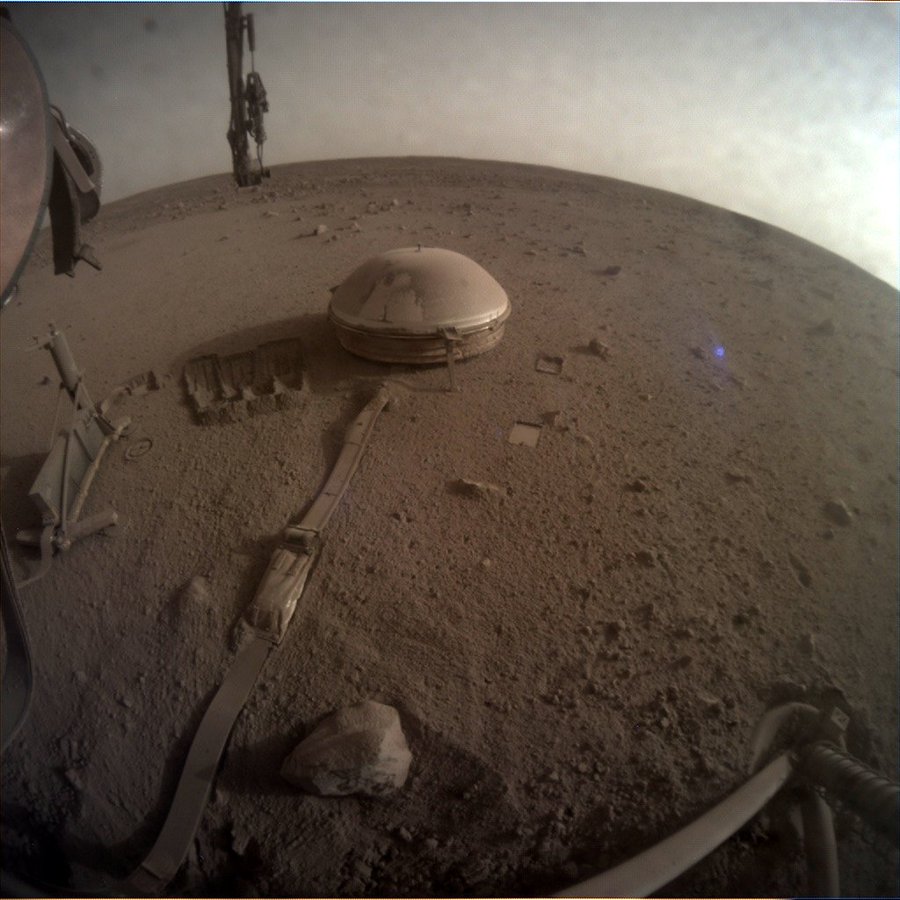The InSight lander might have transmitted its last picture from the surface of Mars. It looks like the lander is succumbing to Mars’ dusty conditions, as its ability to generate energy from its solar panels has been declining in recent weeks. It’s always sad and somehow poignant when a lander or a rover falls silent.
Each of them has a personality that goes along with their mission. But we’ve known for months this day was coming. My power’s really low, so this may be the last image I can send.
Don’t worry about me though: my time here has been both productive and serene. If I can keep talking to my mission team, I will – but I’ll be signing off here soon. Thanks for staying with me.
pic. twitter. com/wkYKww15kQ— NASA InSight (@NASAInSight) December 19, 2022 Even though InSight wasn’t a rover, it was still a complex, ambitious mission.
The lander’s HP3, or Heat Flow and Physical Properties Package instrument (aka the Mole), was designed to hammer its way into the planet and measure heat flow from the interior to the surface. DLR, the German Aerospace Center, designed and built the instrument, and they tried to overcome the obstacles facing HP3, but they couldn’t get the instrument deep enough to produce science. This image shows the difficulty that InSight’s Heat Probe (HP3) faced.
Due to the nature of Martian regolith, it kept popping out of its hole. In this image, mission operators tried using the lander’s scoop to press on the probe’s hole. They hoped that would provide the friction necessary for the hammering action to be effective.
Image Credit: NASA/JPL-Caltech On December 18th, the InSight lander didn’t respond to communications from Earth. The decline in power was entirely expected, but we always hope things will continue by some good fortune. NASA has a track record of Mars rovers outlasting expected mission lengths.
But in this case, it looks like the end is here. December 15th was the last time NASA communicated with the lander. That means InSight’s mission lasted four years from when it touched down on the surface in November 2018.
While the struggles with HP3 caught a lot of attention, the lander’s other instruments worked fine. The SEIS (Seismic Experiment for Interior Structure) instrument was InSight’s prime instrument and was built by the French Space Agency (CNES. ) The lander deployed SEIS on December 19th, 2018.
SEIS successfully detected Marsquakes and a meteor impact that caused a 150 km diameter crater. NASA’s InSight lander placed its seismometer onto Mars on Dec. 19, 2018.
This was the first time a spacecraft robotically placed a seismometer onto the surface of another planet. Image Credit: NASA/JPL-Caltech SEIS measured over 1300 seismic events during its mission, and 50 were clear enough signals to reveal information about their location on Mars. A large cluster of those events came from Cerberus Fossae, an interesting region that shows evidence of recent geological activity.
This image is a vertical plan view of Cerberus Fossae. The pair of trenches are very young and formed from volcanic activity only a few million years ago. Image Credit: ESA/DLR/FU Berlin, CC BY-SA 3.
0 IGO SEIS was built to figure out what Mars’ internal structure was like. It showed that the crust was thinner than thought, only 25 to 40 kilometres (15 to 25 miles) thick. SEIS also discovered that the crust has three layers, and the top layer is only about 10 km (6.
2 miles) thick. SEIS also showed that the Martian core is molten but is larger than thought and less dense than the lower crust. Lighter elements mixed with molten iron in the core lower its density, which explains how the core can still be molten even after cooling considerably.
By reading how vibrations from impacts and Marsquakes travelled through the planet, SEIS gave scientists the data they needed to understand Mars’ interior structure. Image Credit: S. Cottaar, P.
Koelemeijer, J. Winterbourne, NASA. The InSight lander was part of the overall effort to understand Mars and if it was habitable in the past.
By probing the planet’s interior, it revealed some of the planet’s geological history. InSight’s magnetometer showed that the planet’s magnetic field may have been much stronger than orbital measurements showed, which strengthens the case for its potential ancient habitability. When NASA says InSight was a success, they’re right.
We know much more about Mars at the conclusion of the lander’s mission than we did before it landed. But it’s still sort of sad that it’s come to an end. We can’t help but wonder what else we might’ve learned if HP3 had worked.
The post This Will Probably Be InSight’s Last Picture Before it Runs Out of Power Forever appeared first on Universe Today. .
From: universetoday
URL: https://www.universetoday.com/159339/this-will-probably-be-insights-last-picture-before-it-runs-out-of-power-forever/



